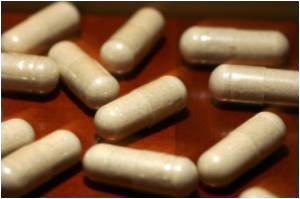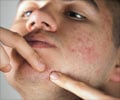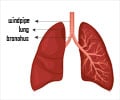Minocycline Medication Information
Discover comprehensive details about Minocycline, including its pronunciation, uses, dosage instructions, indications, and guidelines on how and when to take it or avoid it.
The updated prescription information covers potential side effects, precautions, warnings, and storage recommendations.
Additionally, explore the Minocycline brands available in India and internationally, along with pricing information. For personalized advice, consult your healthcare provider.
Generic Name : Minocycline Pronunciation : mi noe sye' kleen ICD Code : Y40.4 Therapeutic Classification : AntibioticsBrand Names or Trade Names of Minocycline
India :
International :
Dynacin, Minocin, Myrac
Why is Minocycline Prescribed? (Indications)
Minocycline is a broad spectrum tetracycline antibiotic. It acts by inhibiting the growth of bacteria in the body.• It is used for certain infections such as rickettsial infections like Rocky Mountain Spotted fever, typhus fever, rickettseal pox and tick fever, sexually transmitted diseases like lymphogranuloma venereum, granuloma inguinale, chancroid and non-gonococcal urethritis, eye infections like trachoma and inclusion conjunctivitis, atypical pneumonia, psittacosis, relapsing fever, acne, brucellosis, Campylobacter infections, bartonellosis, plague and cholera.
•It may be effective in other infections as well, however several bacteria have developed resistance to the drug.
•It may be used in patients who are allergic to the penicillin group of drugs as an alternative.
•It is also used in people who carry the meningococcal bacteria in their nose and upper throat but do not suffer from any symptoms.
•Local application of minocycline is used in patients with gum disease along with scaling and root planing.
When should Minocycline not be taken? (Contraindications)
Patients allergic to the drug should not take it.What is the dosage of Minocycline?
Children over 12 years: 50mg every 12 hours.Adults- The usual dosage is 100 mg every 12 hours. The dosage and duration varies according to the type of infection.
For local use in the gums, the dose is 1mg given beneath the gums.
How should Minocycline be taken?
Minocycline comes as a tablet, capsule and syrup to take by mouth, with a glass full of water with or without food.For local use in the mouth, minocycline is available as a dry powder in a cartridge that has to be injected below the gums with a cartridge handling mechanism.
What are the warnings and precautions for Minocycline?
• Caution should be exercised in patients with history of asthma, kidney or liver problems, autoimmune disorder, diabetes, any allergy, who are taking other medications, during pregnancy and breastfeeding.• It may cause dizziness or drowsiness, do not drive a car or operate machinery while taking this medication.
• Avoid exposure to direct sunlight.
• Not recommended for children below 12 years since it can affect teeth and bones.
What are the side effects of Minocycline?
Digestive tract- Loss of appetite, nausea, vomiting, diarrhea, indigestion, mouth ulcer, discoloration of the tongue and difficulty in swallowing.Genitourinary- Vaginal inflammation
Liver- Liver disease, jaundice, and liver failure.
Skin- Skin rash, itching, pigmentation of nails, hair loss,serious skin reactions, light-sensitive skin reactions.
Respiratory- Cough, difficulty in breathing, asthma and lung inflammation.
Kidney- Kidney damage, kidney failure.
Musculoskeletal- Joint pain/swelling / stiffness, tooth discoloration in children when the drug is taken during pregnancy, or when it is administered in children, muscle pain.
Ear- Hearing difficulties
Allergic reactions - Allergic reactions which may be mild to severe
Blood- Decrease in blood cell counts.
Central Nervous System- Seizures, dizziness, tingling, sedation, headache and unsteadiness.
Miscellaneous- Fever, discolorations of secretions
What are the other precautions for Minocycline?
Avoid long-term use of this medication; otherwise it may cause secondary infection.Avoid excess dosage.
Minocycline tablet should be swallowed whole with plenty of water to reduce the risk of irritation or ulceration to the foodpipe.
Monitor for possible thyroid cancer in patients who are prescribed the drug over prolonged duration.
What are the Drug Interactions of Minocycline?
Minocycline should be avoided with:• Anticoagulants like warfarin since the combination may increase bleeding.
• Penicillin antibiotics like ampicillin and penicillin G because it may interfere with the action of penicillins.
• Antacids and iron containing products as they may reduce the absorption of minocycline from the digestive tract.
• Oral contraceptives containing estrogen since minocycline may reduce the effect of the contraceptives, thereby resulting in unwanted pregnancy.
• Retinoids like isoretinoin, acitretin therapy which are used to treat acne because of an increased risk of intracranial hypertension.
• The anesthetic gas methoxyflurane which may result in kidney damage.
• Ergot alkaloids like ergotamine, ergometrine as the combination may cause ergot poisoning.
• Drugs used in the treatment of epilepsy like barbiturates and phenytoin which reduce the effect of minocycline.
• Other drugs that may damage the liver like anti-tuberculosis medications.
• Typhoid vaccine due to reduced efficacy of the vaccine if administered along with minocycline.
What are the storage conditions for Minocycline?
Keep this medication in a tightly closed container and out of the reach of children. Store it at room temperature, protect from excess heat and moisture.Schedule : H
Prescription drugs - Drugs to be sold only under the prescription of a Registered Medical Practitioner.










